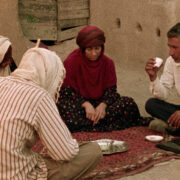ONLY YESTERDAY, Isao Takahata’s Forgotten Masterpiece, 30 Years Later
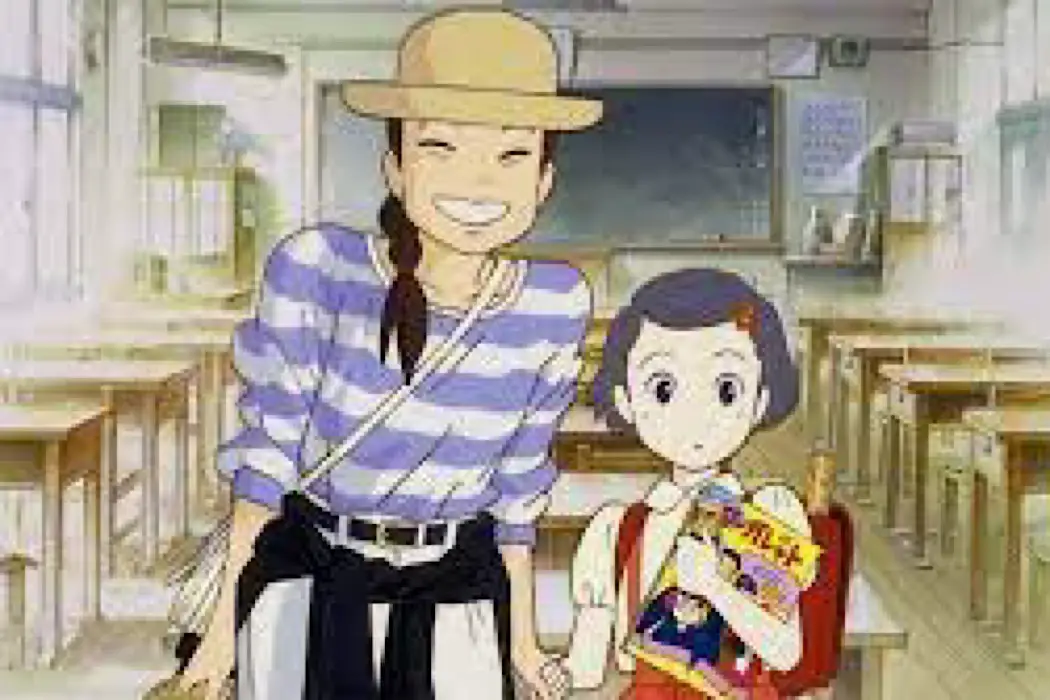
Film critic, Ithaca College and University of St Andrews graduate,…
There’s a scene toward the end of Only Yesterday that sings. Studio Ghibli rode to success on the backs of fantasies and epics, forest spirits and mystical bathhouses, fire-bombings, and world wars. Only Yesterday has none of those things, yet its climax is just as profound as the studio’s most beloved films: Two people in love, sitting in a car in the middle of the night, chat about a boy the woman used to know in school. Rain falls softly on the roof, and the windshield wipers keep the rhythm. There’s a subtle vibrance to the scene and a real, tangible elegance to the dialogue. It’s one of the most magical moments in Studio Ghibli’s entire oeuvre.
Released July 20, 1991, Only Yesterday was the highest-grossing Japanese picture of its year. But from the same studio that produced one larger-than-life fantasy after another, the film is a masterpiece buried on Ghibli’s B-side, known only to die-hard fans of the studio. Only Yesterday is half a coming-of-age story and half a drama about the role of women in Japanese society — which is to say, it’s not their most accessible work. Thirty years on, Only Yesterday stands out as a mature, sophisticated gem among Studio Ghibli’s catalog, a poignant, thoughtful film about growing up, getting old, and the heavy burden of memory. It’s a film unlike any other animated project before or since.
Little Muncher
Only Yesterday marks writer-director Isao Takahata’s second outing with Studio Ghibli, after Grave of the Fireflies three years earlier. Despite co-founding the studio with producer Toshio Suzuki and director Hayao Miyazaki, Takahata doesn’t get nearly the same recognition or acclaim. He only made five movies with the studio, with his final film being The Tale of the Princess Kaguya. (For his slow pace, Miyazaki nicknamed him “Paku-san,” meaning “little muncher.”) Takahata died in 2018.
Every time the studio turned a major profit, Takahata was there to ground it, to say, “Well, that’s nice, let me put this money toward an extremely niche film that will be impossible to market internationally.” That’s how we got raccoons with enormous magical testicles in Pom Poko and a laboriously animated, super-expensive comic strip adaptation in My Neighbors the Yamadas. His films are often more experimental and realistic than Miyazaki’s, eschewing his fellow filmmaker’s broader fantasy elements in favor of naturalistic character pieces. Where Miyazaki comes from an animator’s background, Takahata comes from a writer’s (he studied French literature in college). The most popular Miyazaki films have global appeal, while Takahata’s are quintessentially Japanese. Perhaps that’s why many of his films are deeper cuts that haven’t enjoyed the same kind of international releases and plaudits as Miyazaki’s.
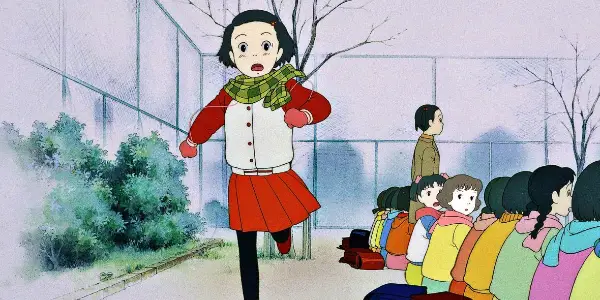
That goes double for Only Yesterday. The film was released in 1991, the pre–Spirited Away days, when most of the studio’s films took years, sometimes decades, to reach international audiences. Only Yesterday wasn’t released to the United Kingdom, Australia, and Germany until 2006, and a fully dubbed version didn’t debut in the United States until 2016.
Pineapples, Safflower, And Baseball
In Japanese, the title of Only Yesterday actually translates to something like “Memories, Plip-Plop.” It’s a coming-of-age tale about a fifth-grade girl, Taeko, growing up in 1966. Takahata found it difficult to wrestle the episodic source manga into a film structure, so he invented a frame narrative for the story — an older Taeko, in 1982, has secured a cushy job, but she hasn’t let go of a dream from her youth of living a quiet agrarian life in the countryside. While she takes a train out to Yamagata Prefecture to pick safflower with some distant family members and friends, her mind wanders back to her fifth-grade self, who is still fresh in her mind. (Yoko Honna voices the young Taeko, Miki Imai the elder.)
In this way, the story takes on a To Kill a Mockingbird dimension — every event from her youth is delivered through a lens that’s sometimes tragic, sometimes fondly reminiscing. Longing for her older sister’s handbag, dealing with a first crush, trying pineapple for the first time — these small vignettes take on emotionally complex, often ironic dimensions from the twentysomething Taeko’s mature perspective.
That emphasis on memory and nostalgia carries over into the animation. In the 1960s scenes, the animation is simple, with lines not quite reaching the edges of frames and white space dominating the compositions. It looks like a prototype version of My Neighbors the Yamadas or The Tale of the Princess Kaguya. The style creates the effect that what we’re seeing isn’t fully formed, or perhaps it’s fading. That’s something that only animation can do: Use the medium to isolate memories like clouds in the sky, hazy and soft, vividly remembered yet unfolding in that grand white infinite of the past.
Even before we see the characters, right from the beginning of Only Yesterday, you know something’s different. The opening credits play out over a piece of textile or cloth, a technique Yasujiro Ozu liked to use. Like Ozu’s work, Only Yesterday focuses intensely on the social rhythms of Japanese society — here, it’s among schoolchildren and farmers — as well as on family dynamics, budding romances, melodrama, and life’s quieter moments.
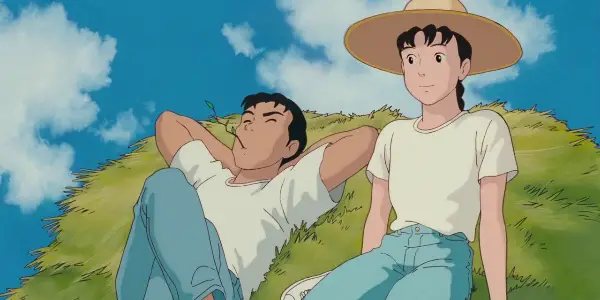
For about 15 minutes when Taeko arrives in Yamagata, the film changes completely into almost a documentary on agriculture. Taeko tells us all about safflower farming and the tribulations of turning it into rouge — and the shocking thing is, this stuff shouldn’t work. Safflower harvesting should make for neither compelling animation nor drama, and yet, Only Yesterday’s safflower sequence is a gorgeous piece of filmmaking. Not only do Ghibli’s gentle pastoral vibes shine through here, but the visual rhythm moves the sequence along beautifully, and the uniquely subtle score from Katsu Hoshi elevates its silent moments. Safflower farming has never been so compelling.
Where the rouge-making scene offers calm and serenity — Taeko finding herself in hard labor and achieving some measure of transcendence through her work — the 1966 scenes provide the film with its levity. Young Taeko can be bratty, obstinate, and easily overwhelmed. During a summer vacation to some hot spring baths, the immensity of one of the baths causes her to faint. After the girls at school get the menstruation talk, she freaks out when the boys learn about periods. And when she’s faced with her first crush — a pitcher for the class baseball team — she’s so overjoyed that she imagines climbing the air and flying through the clouds. In some scenes, the temporal boundaries between them crumble, and fifth-grade Taeko runs around while adult Taeko sleeps.
Familiar Faces And Hot Farmers
Only Yesterday is not just a showcase for Takahata’s talents as a writer and director, but it also features several Ghibli regulars doing top-tier work. Yoshifumi Kondô designed the characters and would go on to direct Whisper of the Heart, while animation director Katsuya Kondô would later design characters for The Wind Rises and Earwig and the Witch. The character animation on display in Only Yesterday may be some of Ghibli’s most fluent. When we first meet Toshio (Toshirō Yanagiba), Taeko’s hot farmer friend, his hand gestures are captured with such precision and grace that you’d swear they just rotoscoped them in.
This also was the first Ghibli film for Masashi Ando, who would work on Paprika, Weathering With You, and Your Name., and cinematographer Hisao Shirai would later join Ghost in the Shell, Perfect Blue, and Neon Genesis Evangelion: The End of Evangelion as director of photography.
While the faces behind the film may be familiar, what we’re seeing on-screen was brand-new for Ghibli. For one, the facial animations for the 1980s timeline were more complicated and realistic than any of the studio’s films before then. And the settings differ as well: The Mount Zaō ski hill, stratovolcanoes and crater lakes have never been seen before in Ghibli, and the abundance of slow, quiet scenes ensures that we have time to soak these settings up. In one scene, the farmers stop to watch the sunrise in real-time. In another, Taeko and her friends run along a hill at sunset; in the foreground, a lonely stick poking out of the dirt is silhouetted exactly like the ōdachi in the burial mound at the end of Seven Samurai.
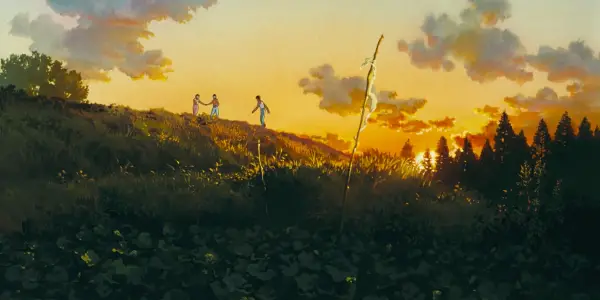
Takahata wanted the flashback scenes to carry the weightlessness and joy of anime. To achieve this, Only Yesterday was animated in two different styles: For 1966, the scenes were drawn first, then dubbed over later; for 1982, the voice actors recorded their lines first, and the artists then matched the animations to their words. This way, the grade-school memories feel more detached and fragmented, like they’re overly idealized or perhaps happening in a dream.
Unfortunately, this means Only Yesterday is impossible to dub properly. Some of the best concepts and lines that don’t survive the translation, either — Taeko’s trademark “At last I can say this in the right setting” line, which she recites from her role in the school play, got altered to something so un-poetic that I don’t remember it. Daisy Ridley, of Star Wars fame, puts on a fine American accent to play Taeko, and Dev Patel’s perfectly charming as Toshio, but there are also subtleties in the regional dialects that Takahata uses to illustrate his characters in the subbed version that are lost on the dubbed.
Conclusion: Only Yesterday
A few dips into magical realism aside, Only Yesterday feels more like a down-to-earth arthouse drama. Takahata conjures a moving, delightful, and often hilarious image of a woman’s life, at once capturing the innocence of childhood and the reality of women’s roles in 1980s Japanese society. Taeko’s found the thing that’s supposed to make her happy, but she can’t help but shake the fifth-grade girl in the back of her mind telling her this isn’t what she wanted.
The characters make a big deal out of Taeko’s being unmarried, but rather than rush toward a romantic union and a marriage, Taeko’s arc is about reconciling her past self with her current one and whether she can twist her life into something more fulfilling. She’s the agent of her own change rather than a supporting character in a man’s story. And this freedom to choose her own destiny takes root earlier still, in the 1960s — Taeko, in voiceover, tells us about how the girls always seemed to play and work harder than the boys. In a society that didn’t encourage women to express themselves or shape their own lives, this was their only chance to have some freedom.
Only Yesterday is everything you can want from a movie: discussions of menstrual cycles, intimate sequences of organic safflower farming, Hungarian folk music, and a hot farmer. It ends with a Japanese cover of Bette Midler’s “The Rose,” and you’re guaranteed to cry your eyes out at least once. This is also perhaps the only Ghibli movie to reference The Beatles. Maybe all of these elements together push Only Yesterday into obscurity, forever consigned to the “completionists only” side of the Ghibli vault, but I think these disparate parts make the film great. It’s the only animated film of its kind — definitely aimed at sad adults rather than sugar-happy kids — and 30 years later, I hope Takahata’s forgotten masterpiece finally finds the love it deserves.
What do you think of Only Yesterday? Comment below and let us know.
Does content like this matter to you?
Become a Member and support film journalism. Unlock access to all of Film Inquiry`s great articles. Join a community of like-minded readers who are passionate about cinema - get access to our private members Network, give back to independent filmmakers, and more.
Film critic, Ithaca College and University of St Andrews graduate, head of the "Paddington 2" fan club.












